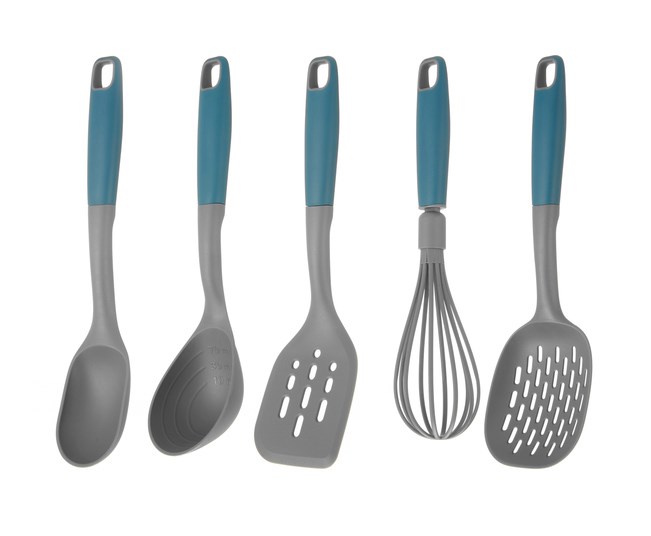
When part aesthetics and functionality are of major concern, injection molding alone may not provide the capabilities you need. That’s where overmolding comes in. Overmolding is a specialized injection molding process that involves injecting one type of material over another, typically bonding two or more materials together to create a single, integrated part. Capable of improving aesthetics, enhancing ergonomic design, and providing shock absorption, overmolded parts are essential in everything from medical equipment and automotive components to consumer goods and electronics. But what goes into an overmolded component? Below, we’ll take a closer look at the process with an overmolding design guide.
The Advantages of Overmolding
Overmolding is a versatile process with a lot of possibilities and advantages. Compatible with materials like thermoplastics, engineering-grade resins, and consumer-grade plastics, overmolding provides a number of benefits such as improved aesthetics, enhanced ergonomics, cost savings, sealing and encapsulation, vibration dampening, weight reduction, and increased complexity of design. As a result, it can be widely applied in nearly every industry, including:
Automotive: Comfortable and ergonomic grip on steering wheels, gear shift knobs, and handles, as well as connectors and sensors.
Consumer Goods: Enhances the appearance and ergonomics of products like remote controls, mobile phone cases, and game controllers.
Medical Devices: Biocompatible and ergonomic grips on surgical instruments as well as to seal sensitive electronics in medical devices.
Electronics: Electronic connectors, cable assemblies, and wearables to provide strain relief and enhance durability.
Industrial Equipment: Handles and grips on power tools, hand tools, and machinery, improving user comfort and reducing operator fatigue.
An Overmolding Design Guide: The Basics
Material Selection
At the start of any injection molding project, you want to be sure to select a material with the right characteristics for your needs. Overmolding is no exception. In fact, material selection for overmolding is slightly more involved because the two materials need to be compatible with one another. The base material should provide the desired structural properties and can be either plastic or metal-based, and the overmolded material needs to provide the required function, be that improved grip, better sealing, or enhanced aesthetics.
Design for Assembly
In the scope of your larger products, it's useful to identify parts that can be consolidated through overmolding to reduce assembly steps. The key here is to ensure that tolerances between the base and overmolded materials are within acceptable limits to achieve a secure bond.
Surface Preparation and Bonding
The surface of the base material needs to be properly prepared to promote adhesion. Consider whether the base material will require cleaning, degreasing, or adhesion promoters/primers. Second, adhesion tests between the two materials can help you determine how strong the bond will be.
Mold Design
The mold design is essential to ensuring that your end product meets your requirements. In overmolding, the mold needs to be designed with a separate core and cavity, one for the base material and one for the overmolded material. The gating and runner systems placement, venting, and cooling factors can also help minimize defects.
Undercuts, Parting Lines, and Draft Angles
Remember that undercuts can significantly complicate the molding process, so you should minimize them in your part design. Side actions and collapsible cores are two potential alternatives to undercuts. Similarly, the location of the parting line needs to be carefully selected to avoid interference with critical features or aesthetics.
Including draft angles on part surfaces can help facilitate easy ejection from the mold and prevent damage to the part during this process.
An Overmold Design Guide: The Role of Prototyping and Testing
Another major consideration in an overmold design guide is the concept of prototyping and testing the parts. In overmolding, rapid prototyping can be done via 3D printing, CNC machining, or soft tooling.
Prototyping is essential to verify that your design meets functional, structural, and aesthetic requirements. It’s also helpful for ensuring that your materials are compatible–both with one another and with your specific application.
When designing your part for the prototyping phase, start with a conceptual design that outlines the overmolded features, materials, and intended functionality.
Manufacturing and Production
In the context of the manufacturing process itself, it’s important to consider factors like molding parameters, post-molding processes, quality control, and cost. Process parameters like temperature, pressure, injection speed, and cooling time can drastically impact how the materials behave and the quality of the finished product.
Similarly, decide which quality control measures will be most beneficial to your process. Adhesion testing, dimensional checks, and visual inspections are only three options of many. A skilled manufacturing partner can help you determine which are necessary for your project.
Finally, keep in mind that every part of the overmolding process comes with an associated cost, from materials and labor to scaling production and supplier partnerships.
Overmolding Design Guide: Best Practices
No overmolding design guide would be complete without running through a list of best practices for achieving high-quality results from the process.
Early collaboration is absolutely essential. Involving cross-functional teams from design, engineering, and manufacturing early in product development ensures that overmolding design guide considerations are implemented from the start.
Process documentation, a continuous improvement mindset, and stringent quality checks are also essential to ensuring that your parts meet the requirements of your specific application.
Get Next-Level Overmolding Services From Thogus
At Thogus, our specialty lies in mid- to high-volume injection molding services for a wide range of industries and applications. Our decades of experience and extensive capabilities enable us to customize manufacturing services on a project-by-project basis. This means that we’ll approach your product with exceptional attention to detail and a commitment to white glove customer service.
If you’re looking to simplify your product with overmolding, we’ll help you through every step of the process, from design optimization and material selection to secondary processes and quality assurance.
Connect with our team of experts today to get started.
Experience the Thogus Difference
Connect with us today to discuss your project and to learn more about our capabilities.